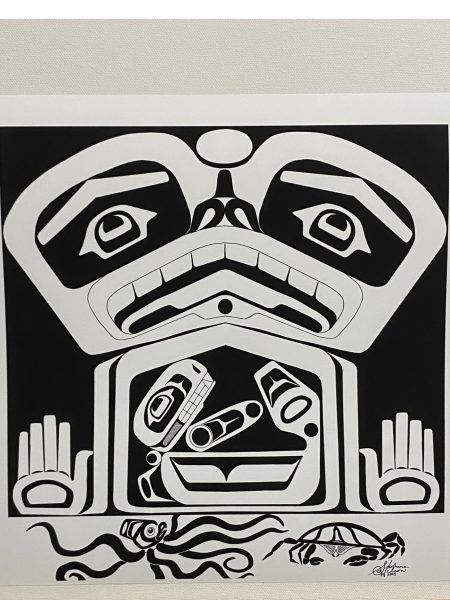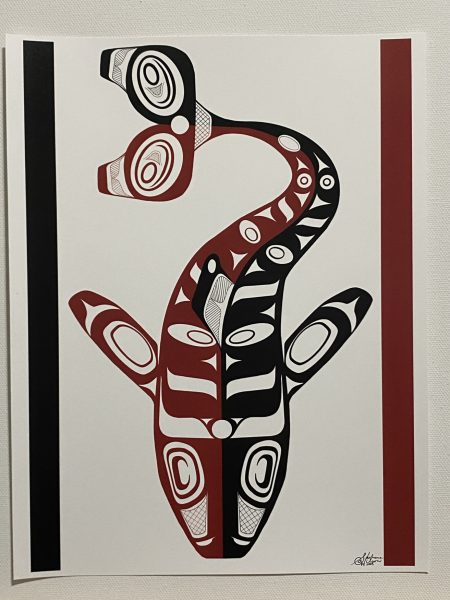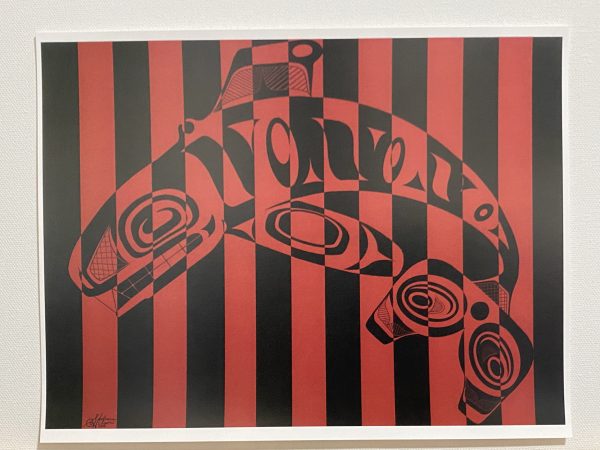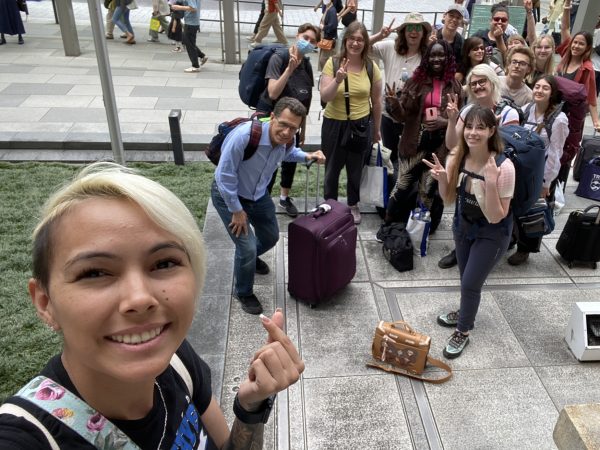
Origin story
Art has long been an important part of Shoshana Wilson’s life. Guided by her father, well-known Haisla artist Barry Wilson, the Thompson Rivers University (TRU) Indigenous student found her voice — and her way — through drawing.
“I always end up finding my way back to art,” says Wilson. “Whenever I try to do something else, I end up not liking it and going back to art. It always leads the way.”
Wilson’s sister and biggest supporter, law student Tara-Lynn, knew art was Shoshana’s calling, and she encouraged her to explore her talents at TRU — which she did. Little did either of them know where Wilson’s works would end up.
Journey to Japan
When Wilson was recently given the opportunity to share her work in Japan, through TRU’s Field Course in Geography (GEOG 3700) course, she was excited.
“My classmates and I were looking for gifts to give to people while we were over there and then one of the student’s suggested we gift First Nations art,” says Wilson. “I told them I’m a First Nations artist, so then my teacher, Tom Waldichuk, was all over it.”

Blackfish (top view)
“It’s nice that during this field course we could give gifts that were more meaningful to our students,” says Waldichuk, associate professor in the Faculty of Arts. “These prints also illustrate the efforts of a TRU student in one of our programs.”
Presenting her work
Based on Wilson’s original paintings, the digitized prints were given to 21 individuals over the course of the trip, including the mayor of Uji (Kamloops’ sister city), the mayor of Ushiku City, the president of Bunkyo Gakuin University and the homestay mother who hosted Wilson in Uji.
“I sketched each painting on my iPad, simplified it and then printed it on nice paper. And that’s what we gave,” she says.
Wilson – who is minoring in language and global studies and learning Japanese – was also tasked with presenting the gifts to the hosts.
“The challenge was trying to explain the story behind the images,” she says. “With the language barrier, trying to explain something from my culture, in English, and then explaining it in Japanese, was hard. My teacher helped translate some words that might help our hosts understand. My speech provided a quick explanation of what each image was.”

Blackfish (currently on display at Kamloops’ Paramount Theatre)
Based on traditional stories, Japanese folklore helps to better understand the country’s history and traditions. Something Wilson, as an Indigenous person, is familiar with.
“Folklore is used in Japanese culture a lot, so that was the best way to explain Indigenous stories. When I explained the origin story image (pictured right) to them, I told them the blackfish is the symbol of our clan – the blackfish clan, the Haisla Nation. ‘Densetsu’ means legend in Japanese, so I told them the blackfish is the densetsu of my culture.”
Honoured and humbled by the artwork, the hosts thanked Wilson for the touching gifts.
“I was so proud to share my culture, my art, with them,” says Wilson. “And knowing First Nations art is on display in Japan, makes me so happy.”

Pictured left to right: Shoshana, Associate Professor Tom Waldichuk and Field Course in Geography students in Japan

